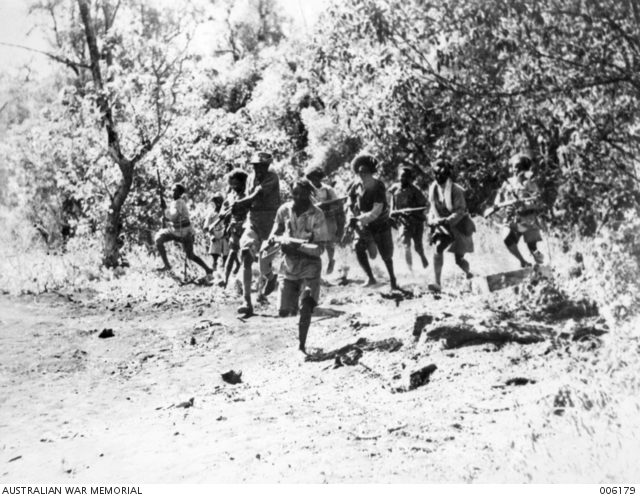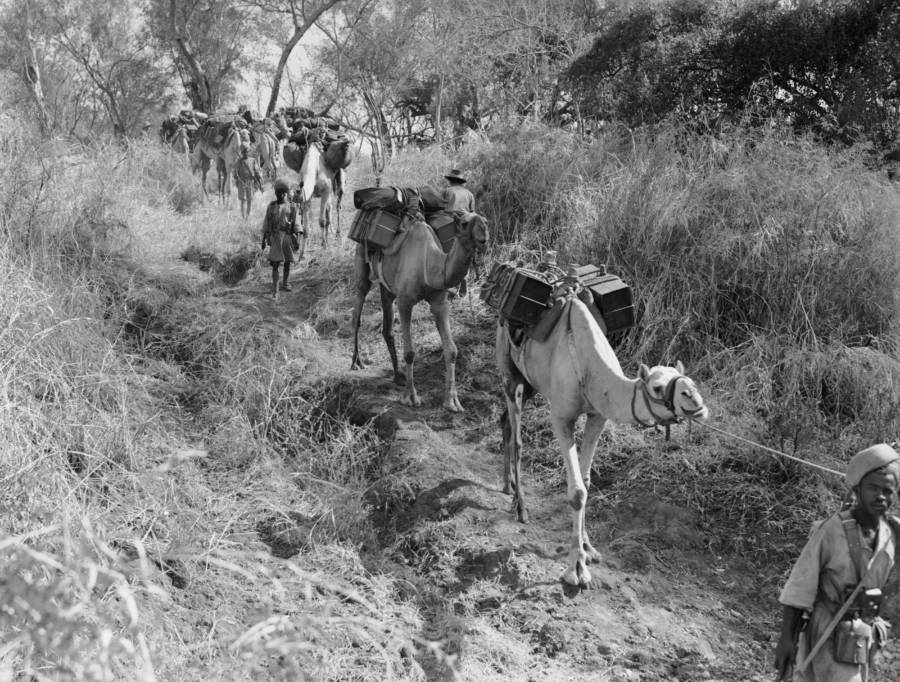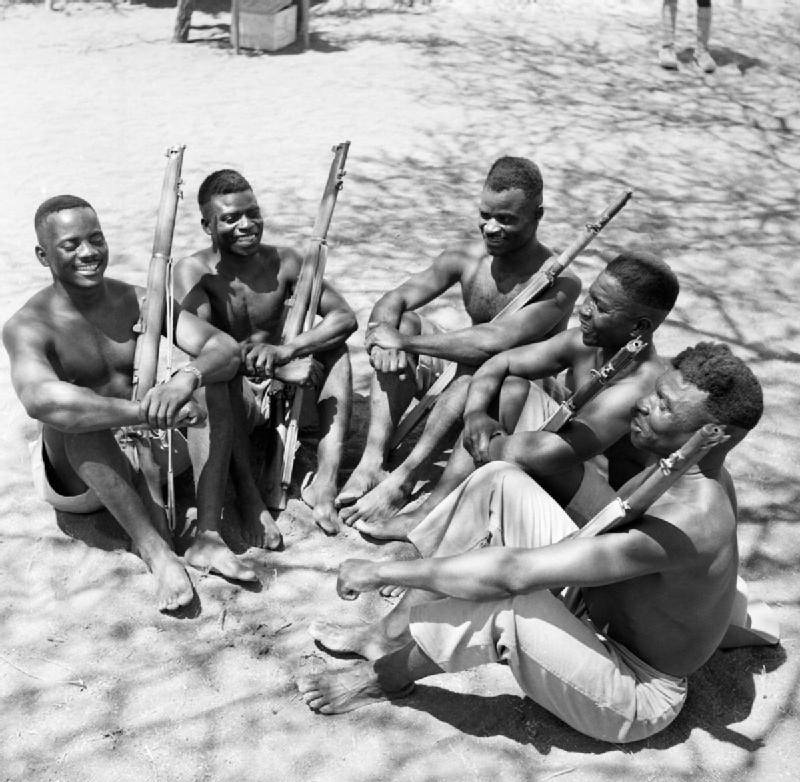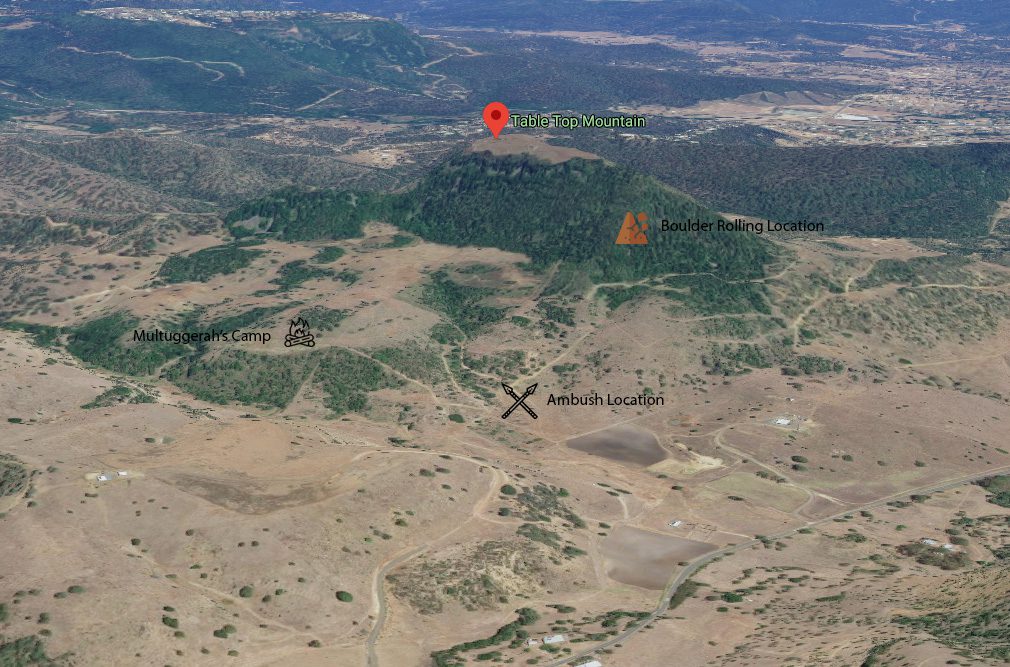Reading time: 6 minutes
Guerrilla warfare played a huge role in World War II. Partisans in France, Yugoslavia, the Eastern Front and the Philippines have much written about them. Vitally important but lesser known were the Abyssinians (Ethiopians) fighting to eject the Italians from their country.
By Ellen Rubin.
Control of East Africa was essential to the Allies as the gateway to the Red Sea and Suez Canal. The Italians invaded Abyssinia in 1936, in a campaign that used poison gas and resulted in the death of seven percent of the population. Emperor Haile Selassie fled into exile in Great Britain. Abyssinia, as well as Eritrea and Italian Somaliland, were consolidated into what became known as Italian East Africa.
The fight to defeat the Italians in Ethiopia actually took a relatively short time: from November, 1940 to their final surrender in November, 1941. Troops from many Commonwealth and African countries took part, but the contribution of Ethiopian resistance fighters, or Arbengoch (Patriots in Amharic), was particularly impressive. They had few weapons, little training, and a poor communication infrastructure. Meanwhile, British forces were undermanned and had limited material support, making guerilla warfare an ideal way of taking the war to the Italians.
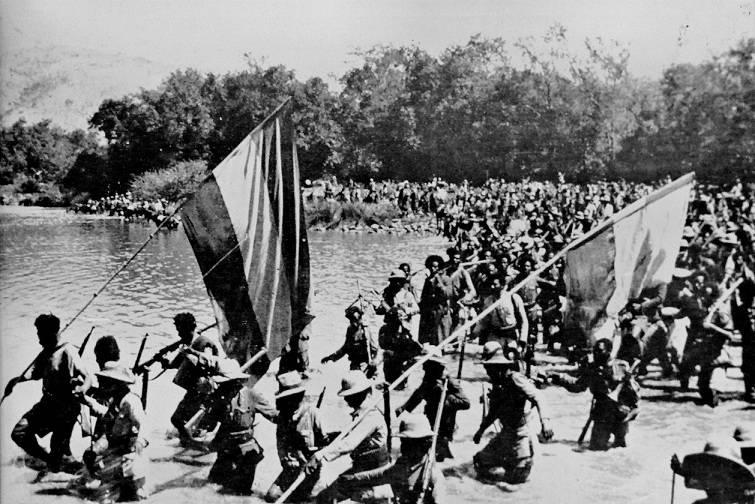
The Emperor returned to Africa in June, 1940 and working with General Wavell, formed the Mission 101 group to coordinate activities with the Arbengoch. Among their other accomplishments, they dropped propaganda leaflets and supplies to help generate support for the resistance. Funded by £1 million, small groups—an officer, 5 NCOs and several hand-picked Ethiopian soldiers—were trained in guerrilla warfare to provide leadership cadres for others. These groups included some Australians, such as the one shown below.

The undermanned British gained a tactical advantage when the Government Code and Cipher School at Bletchley Park broke the Italian’s ciphers in May, 1940, giving them the ability to anticipate Italian movements and making ambushes possible. A joint unit, the Gideon force, was formed after Emperor Salassie returned to Gojjam on January 20, 1941. It was comprised of 800 partially trained troops loyal to the emperor, 50 British officers and 20 NCOs, as well as 800 fully trained Sudanese troops along with the Arbengoch. In February 1941, Colonel Orde Wingate, long a proponent of unconventional military tactics, was sent to assist the Arbengoch in liberating Ethiopia from Italian domination.

The long supply line over rough terrain required 15,000 camels, many of which perished in the parched conditions. However despite this the Mission 101 groups were able to attack and contribute to the surrender of 250,000 members of the Italian-led Royal Corps of Colonial Troops (Regio Corpo Truppe Coloniali). They attacked from the south while British troops from Sudan penetrated Eritrea in the north. This not only isolated the Italians in the highlands but cut off access to the Red Sea and resupply. In 6 weeks of fighting the Gideon Force was able to capture 1,100 Italian and 14,500 Ethiopian troops, a limited number of weapons, and 200 pack animals. The final skirmish was the Battle of Keren. The Italian governor began negotiations of surrender shortly thereafter.
Emperor Selassie re-entered the capital of Addis Ababa on May 5, 1941. By this time, the efficacy of using guerrilla tactics in the rough terrain of Ethiopia was proven. The final stage of the campaign was the Battle of Gondar. A map drawn by Ethiopian forces during the planning of this operation is shown below.
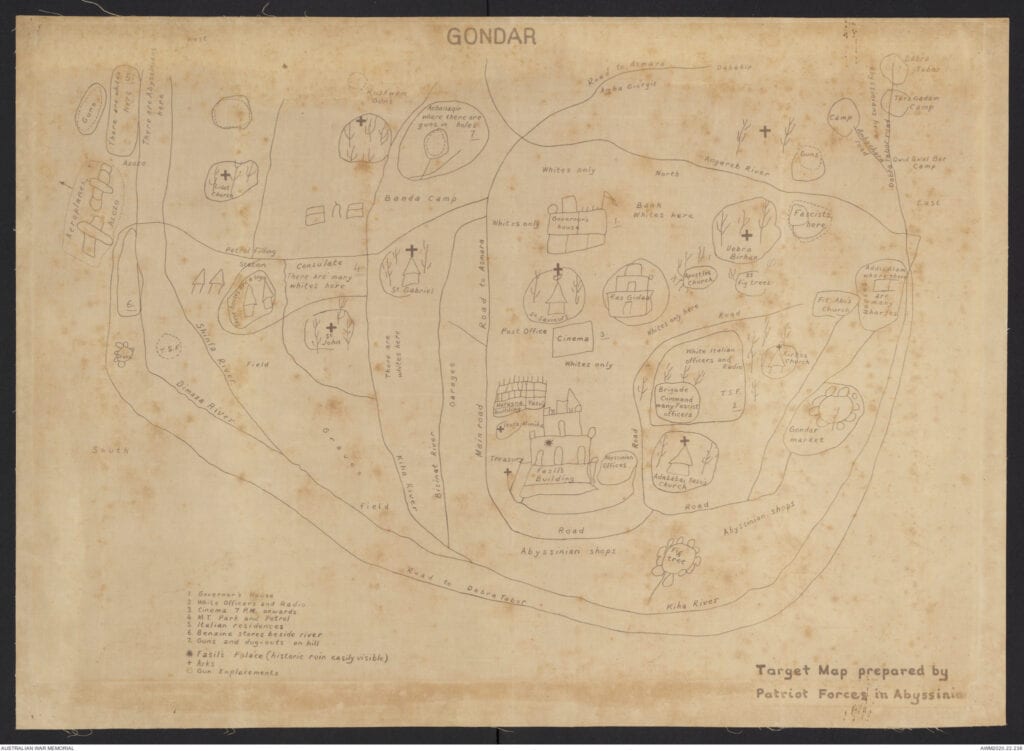
Italians soldiers who refused to surrender after the Battle of Gondar in November 1941 used guerrilla warfare tactics against the Allies until the Armistice of Cassibile in September, 1943 when the war between Italy and the Allies officially ended.
Ultimately, the war in Ethiopia eased the pressure on British shipping through the Suez Canal, increasing the flow of supplies through the Red Sea to Egypt. The fight for Italian East Africa became the first victory against Fascist invaders for the Allies. Most importantly to Ethiopians, it was the precursor to independence from colonial rule.
Here are some great podcasts that cover this period of history.
WW2 Ethiopia Image Gallery
Articles you may also like

Battle of 42nd Street – Anzacs Proving Germany Could be Beaten
Morale can make all the difference on the battlefield. On the 27th May 1941, with the Greek island of Crete close to loss and the Allies in full retreat, a 12 minute moment of madness by Australian and New Zealand troops proved that aggression and bravery could overcome Germany’s elite troops. By Richard Shrubb. Background […]
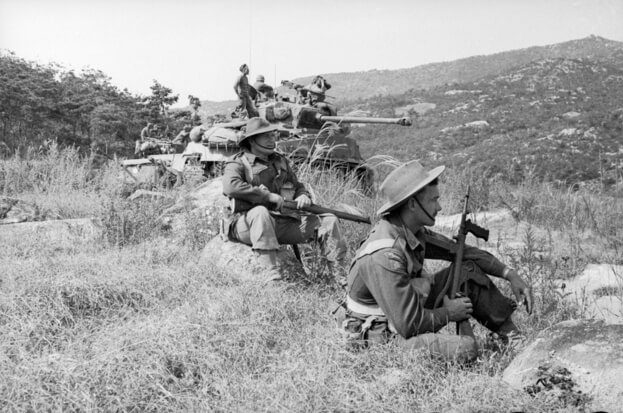
‘Australia’s smallest peacekeeping force’ in the unknown prelude to the Korean War
In the years leading up to the Korean War, the two future combatants were already fighting each other in a virtually undocumented guerrilla war. North Korean infiltrators and Republic of Korea (ROK) combat units skirmished inside South Korean borders for most of 1949 and early 1950. Thousands were killed. Both sides were accused of provocation and starting local engagements.


